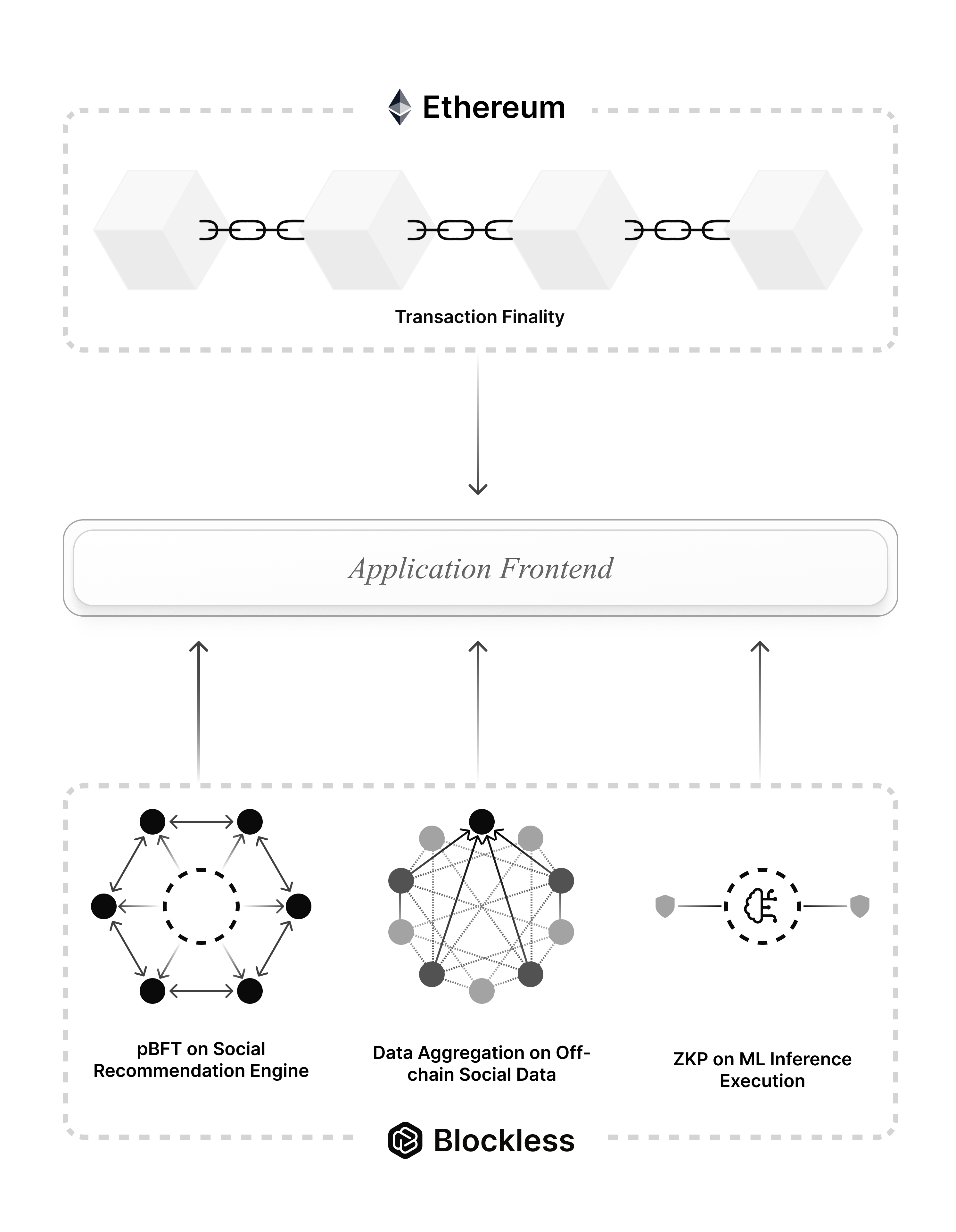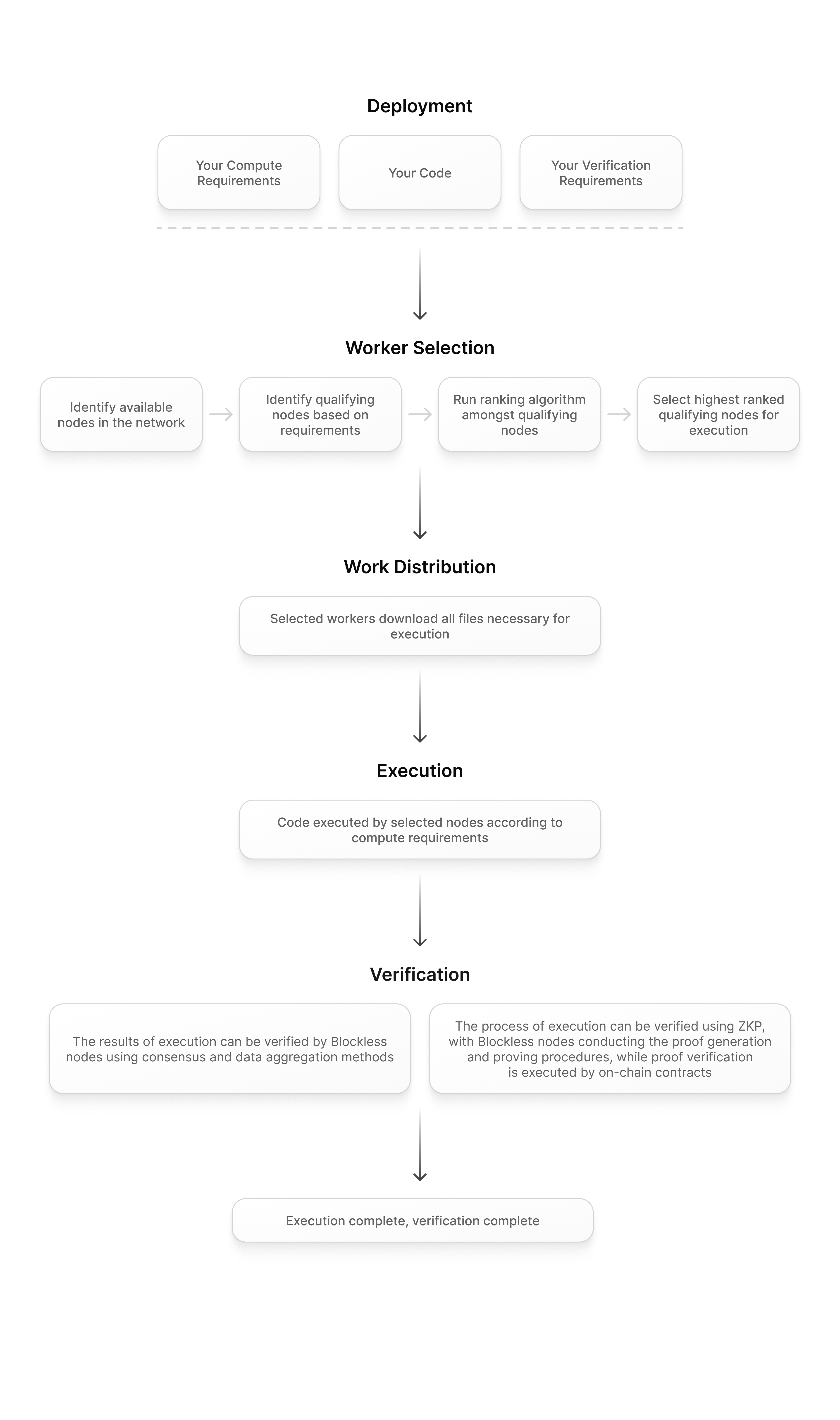And how we’re making key web infrastructure Network Neutral
Decentralized applications, or dApps, have been useful in our transition away from centralized infrastructure, towards a decentralized, stable, and secure digital experience. However, these applications remain limited by and through the many decentralized networks they are built on. Heavy computations (or workloads) aren’t suitable for blockchain technology, meaning that dApps simply cannot cater to vast amounts of people processing vast amounts of data — and the data that can be processed has to be done through the method prescribed by the network.
We’re looking to change that with Network Neutral applications.
Network Neutral applications (nnApps) hold onto the ‘decentralized’ part of dApps — the key difference is that our modular application architecture enables applications to operate beyond the rules and constraints of the network(s) they live on, from Layer 1 blockchains to L2 rollups.
This means that applications are able to carry out heavy computations that aren’t otherwise possible on the blockchain, whilst retaining the security provided by those blockchain networks. These applications are ‘network neutral’ because their performance isn’t impacted by the network they’re operating on, allowing applications to live on Solana, Ethereum, and any other network you’d like, leveraging them only for the things they’re good at — namely, providing security and a large pool of potential users, allowing Blockless to handle the rest.
nnApp Architecture

At the heart of each nnApp is what we call a dream network. This is an app-specific network of nodes dedicated to running all the things that can’t run on blockchain networks. Each nnApp has its own dream network, which is responsible for executing the code that you’ve loaded onto the Blockless platform. The nodes forming part of each dream network are selected (in a pseudo-random fashion) based on their suitability for each workload. Our platform then allows you to select which consensus or verification algorithms you use to verify and validate the execution of your application’s workloads.
Here are the four essential parts for building a nnApp:
-
Your code
-
Nodes that execute your code
-
Automated workload orchestration
-
Dynamic consensus & verification methods
With a modular application architecture, we’re able to look at and optimize each individual workload within an application, instead of seeing an application as a singular utility. This allows multiple workloads to interlink to fulfill the application’s overarching objectives. This collaborative framework means that a single nnApp could be serviced by several node groups, consisting of entirely different nodes in each. The same logic applies to how we secure our nnApps — different consensus mechanisms may be deployed in tandem to ensure the robustness and security of any single nnApp.
How do these mechanisms work in reality?
For our orchestration mechanism, we’ve fine-tuned a ranking system to ensure that every single workload has the most suitable nodes processing it, ensuring optimal performance and security. For example, the nodes used to carry out workloads for a large language model (LLM) will differ from the nodes used for a simple data feed function. Our orchestration mechanism also features execution failover, meaning that if a node falls offline, another one is brought up to replace it immediately.
We take the application apart further, with our dynamic consensus mechanism, allowing for every workload to be verified with the most suitable consensus and/or verification algorithm. For example, if your application requires majority consensus on execution results, you might want to use pBFT or RAFT. But for privacy-preserving user verification, you might want to use ZK proofs. You can see how these workflows look below.

Each dream network is an application-specific network, spawned by the builder (you!) that offers a trustless and decentralized environment for executing tasks beyond the scope of smart contracts. These networks enhance the versatility and functionality of smart-contract-based applications, all while preserving their inherent trust and verifiability.
By providing a platform to build applications, and a tailor-made network for running each of these applications, Blockless facilitates the next transition, from a focus on networks to a focus on applications, where performance and scalability don’t come at the expense of decentralization. With our nnApp architecture, we enable fully decentralized, web3 applications to run stable diffusion models, process arbitrary real-world data, execute complex financial models, and offer a service experience just as good as any application you enjoy today.
If you’d like to be a part of our network, as a builder or as a node-runner, you can join the community and speak with the team through the link here.
About Blockless
Blockless is the platform to launch, integrate, and secure Network Neutral Applications (nnApps) at unprecedented speed.